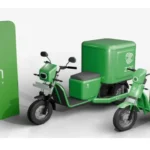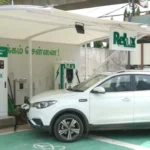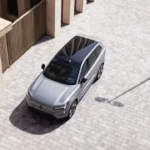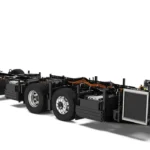ICE 2W Ban: Delhi, the Indian capital, has long been grappling with high levels of air pollution. Consistently ranks among the world’s top most polluted cities. Taking a bold step to address the crisis. The Delhi government has banned non-electric two-wheelers from August 2026. Under its EV Policy 2.0. This is a historic move, but it has generated high-level controversy. Regarding its consequences for the environment, economy, and society.
Why the ICE 2W Ban Matters?
Vehicular pollution is the major reason for the air pollution in Delhi. With a major contribution coming from two-wheelers due to their large numbers. Studies show that these two-wheelers release the same amount of pollution as cars. Even though they are smaller and more efficient. Shifting to electric two-wheelers would dramatically decrease carbon emissions. Making the city’s air cleaner. Moreover, this policy aligns with global trends toward sustainable urban mobility. Cities like Oslo and Amsterdam have successfully implemented bans on fossil-fuel vehicles. Delhi’s initiative could position it as a leader in green transportation in India.
Opportunities Created by the ICE 2W Ban
- Environmental Benefits: The shift to electric two-wheelers will reduce greenhouse gas emissions and particulate matter. Contributing to cleaner air and better public health.
- Boost to EV Industry: The prohibition will speed up India’s EV industry growth. Firms such as Ola Electric and Ather Energy are already increasing production. To keep up with growing demand.
- Job Creation: The EV ecosystem production, charging infrastructure, and maintenance. It can generate thousands of new employment opportunities.
- Global Recognition: Delhi by taking proactive steps against pollution can be a role model for other cities globally.
Challenges Ahead of ICE 2W Ban
Although the ban is ambitious, its enforcement has several challenges:
- Affordability: Electric two-wheelers remain costlier. Than their internal combustion engine (ICE) equivalents. Making them less affordable for low-income segments.
- Infrastructure Gaps: Delhi does not have sufficient charging points for EVs. Which may discourage consumers from adopting.
- Economic Impact: Several small businesses depend on cheap ICE two-wheelers for logistics and delivery services. A blanket ban would affect livelihood without adequate alternatives.
- Consumer Resistance: Cultural resistance and doubts regarding EV performance. It could slow up rates of adoption.
What Needs to Be Done?
To make this policy a success, a number of actions need to be undertaken:
- Subsidies and Incentives: Offering monetary support for the purchase of electric 2W can increase affordability.
- Infrastructure Development: Installing more charging points throughout Delhi. It is essential for building consumer trust in EVs.
- Phased Implementation: Implementing the ban in phases will give citizens and businesses time to adjust.
- Public Information Campaigns: Informing citizens about the advantages of EVs can counteract opposition.
ELCTRIK Speaks
The prohibition of non-electric two-wheelers in Delhi is a courageous move. Toward curbing air pollution and promoting sustainable city mobility. Prudent planning and implementation can make this policy a game-changing success story. By embracing inclusivity and innovation, Delhi can pave the way for India to move into a cleaner, greener future.







